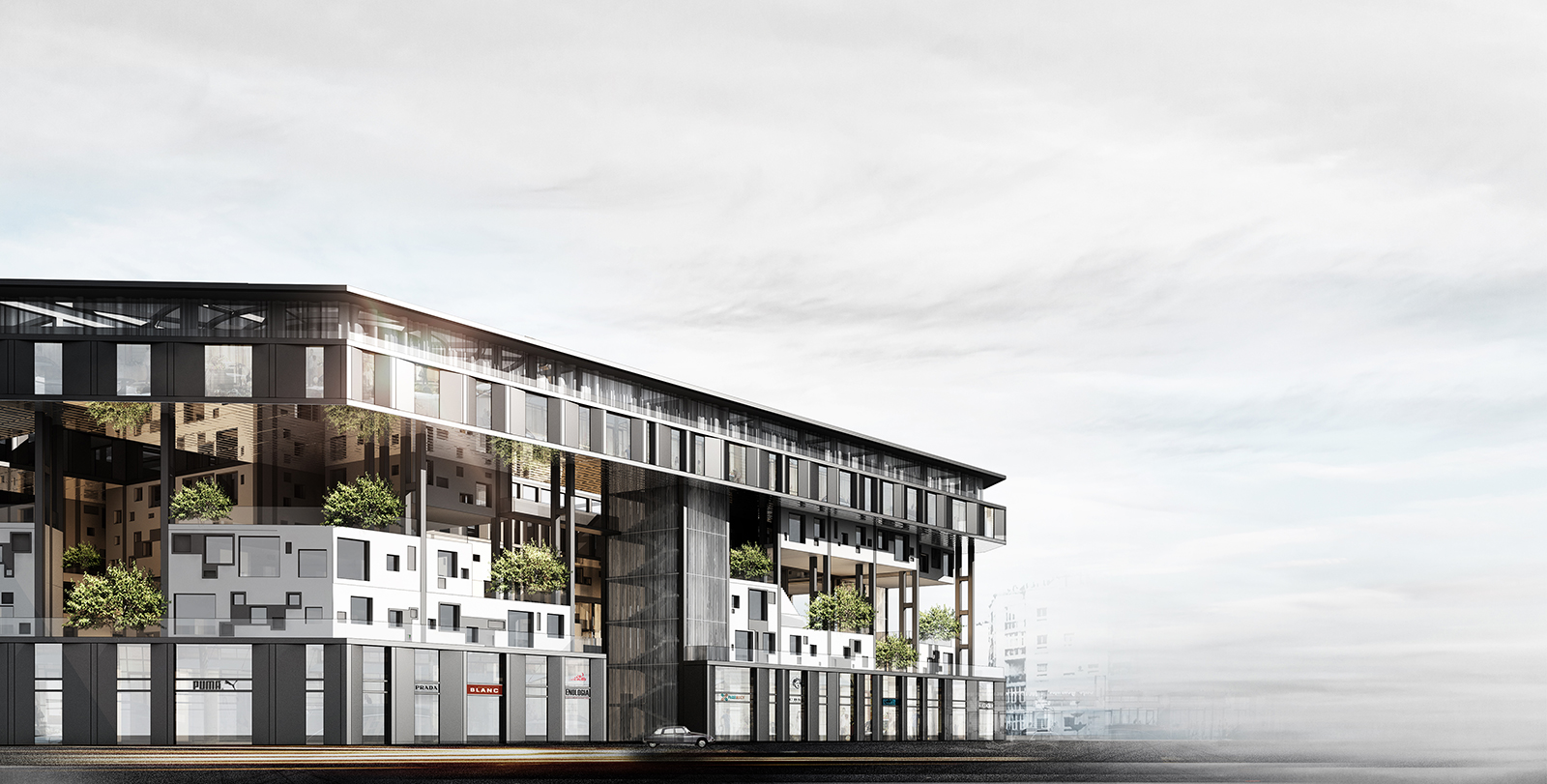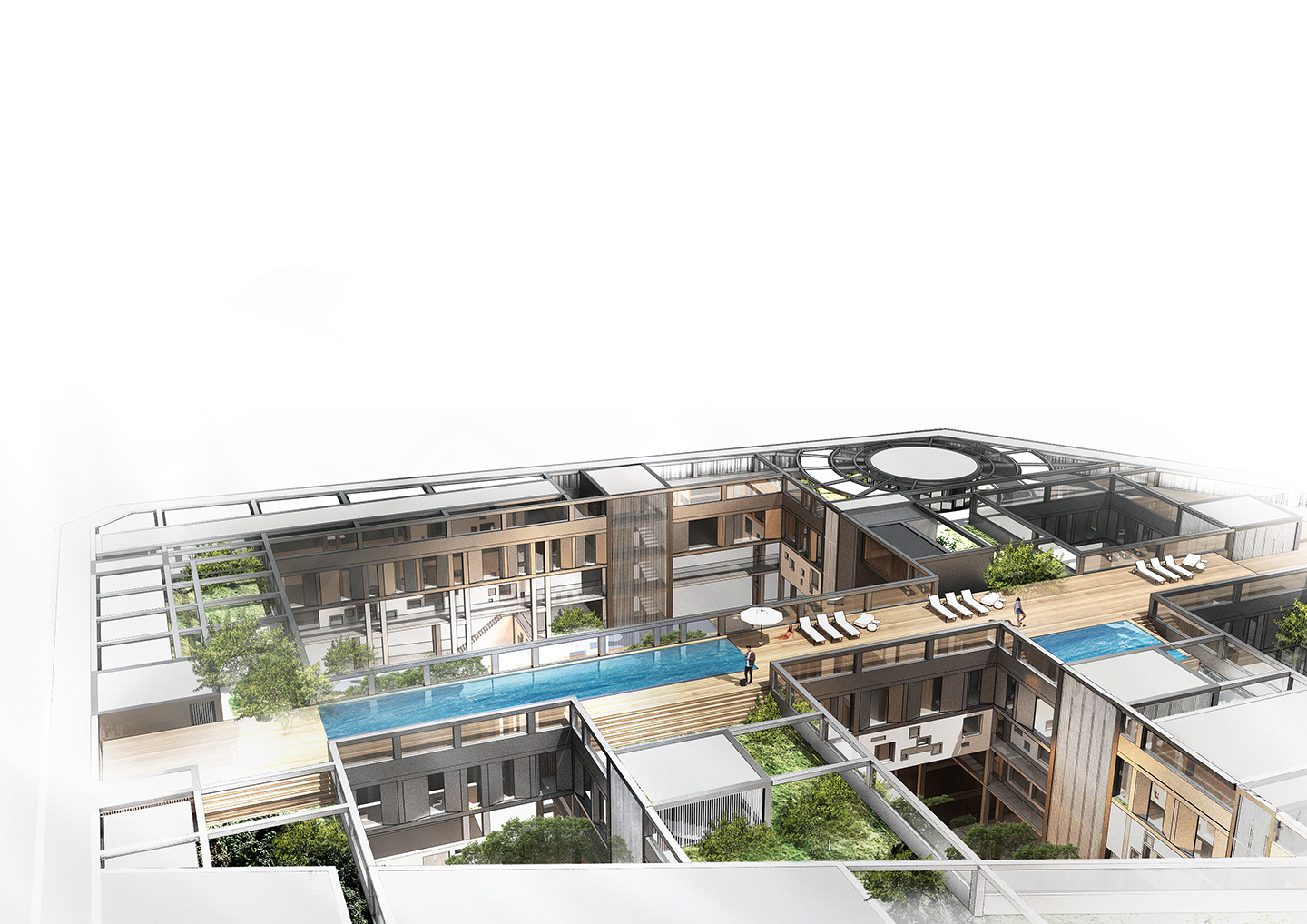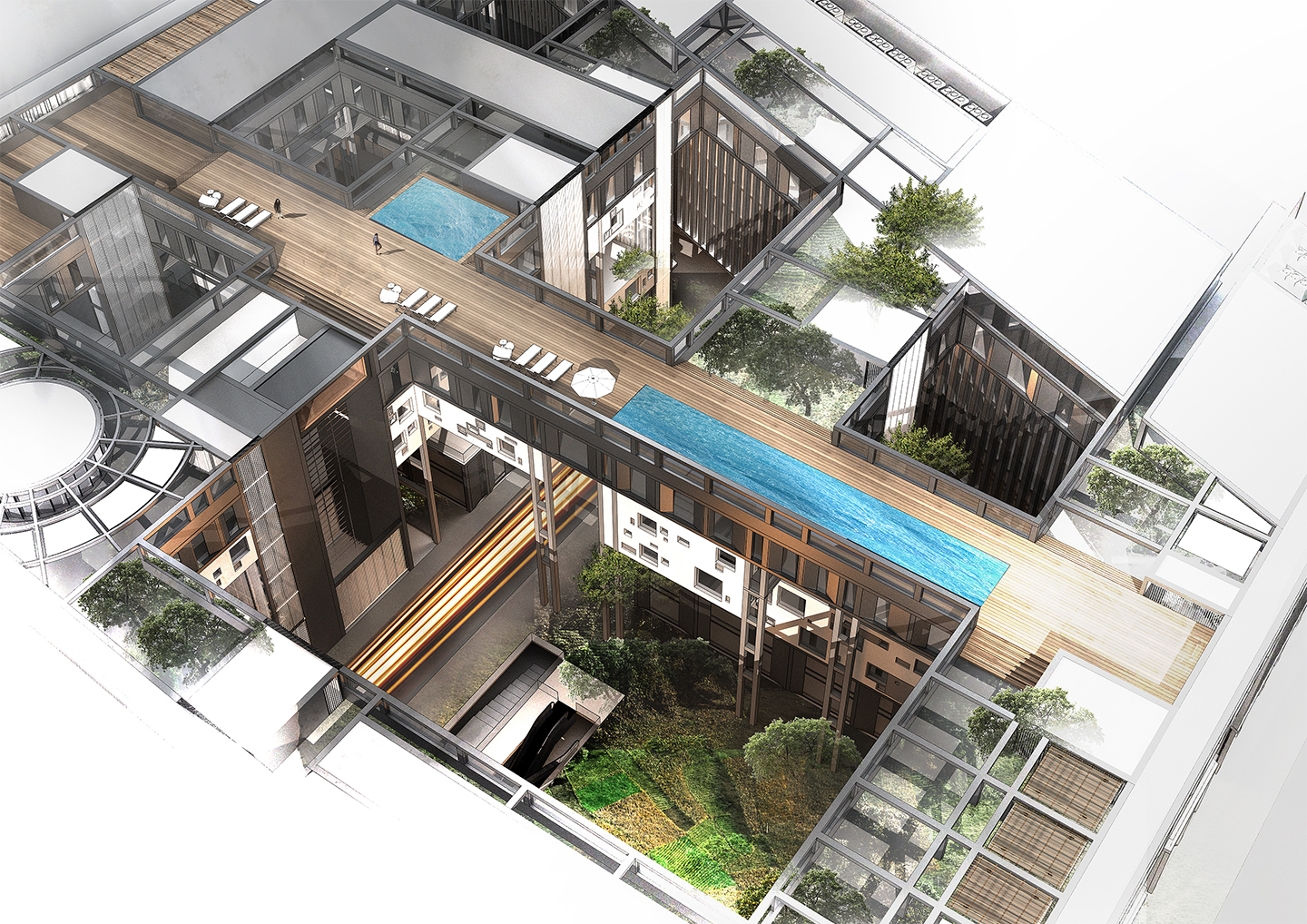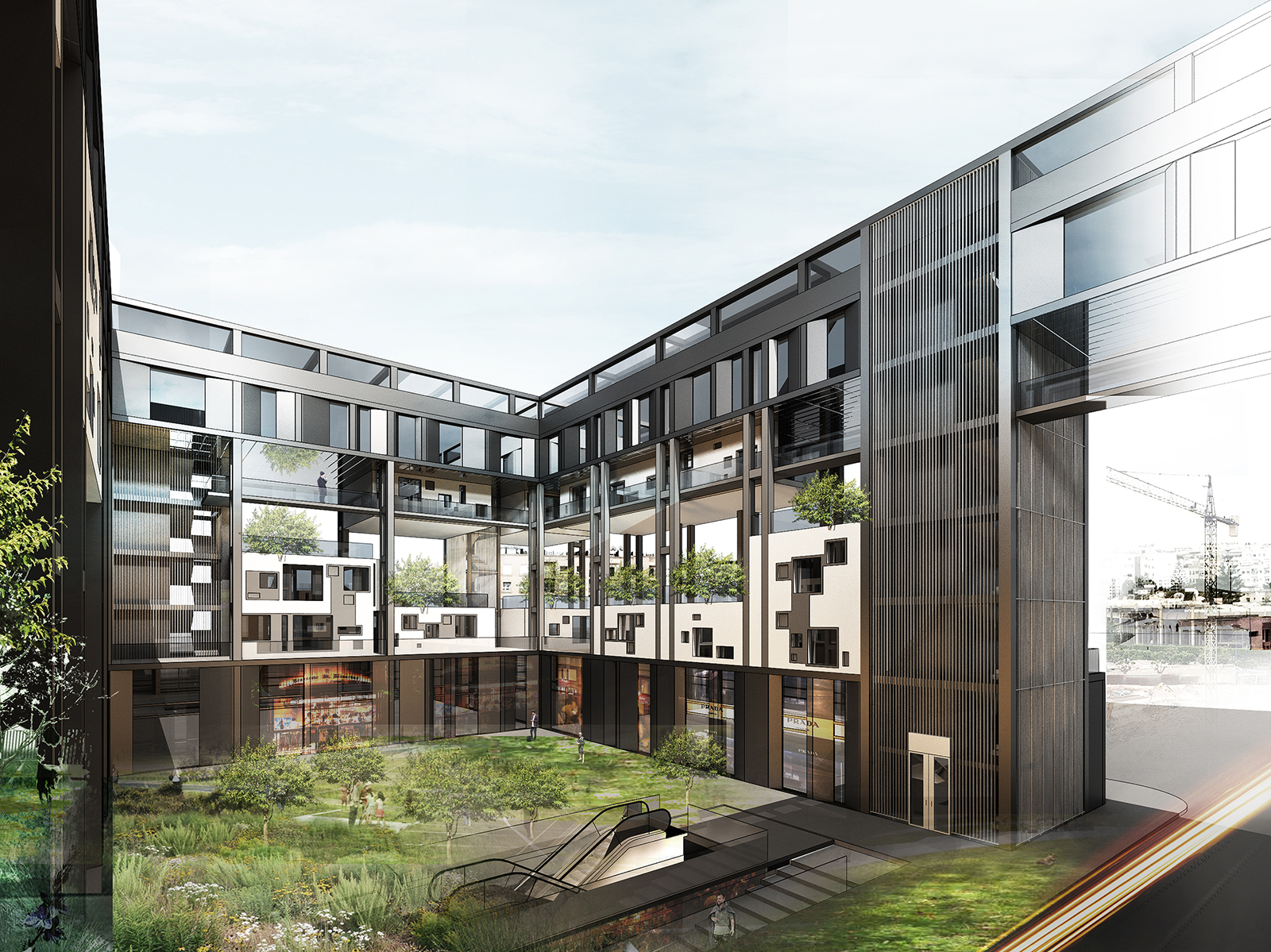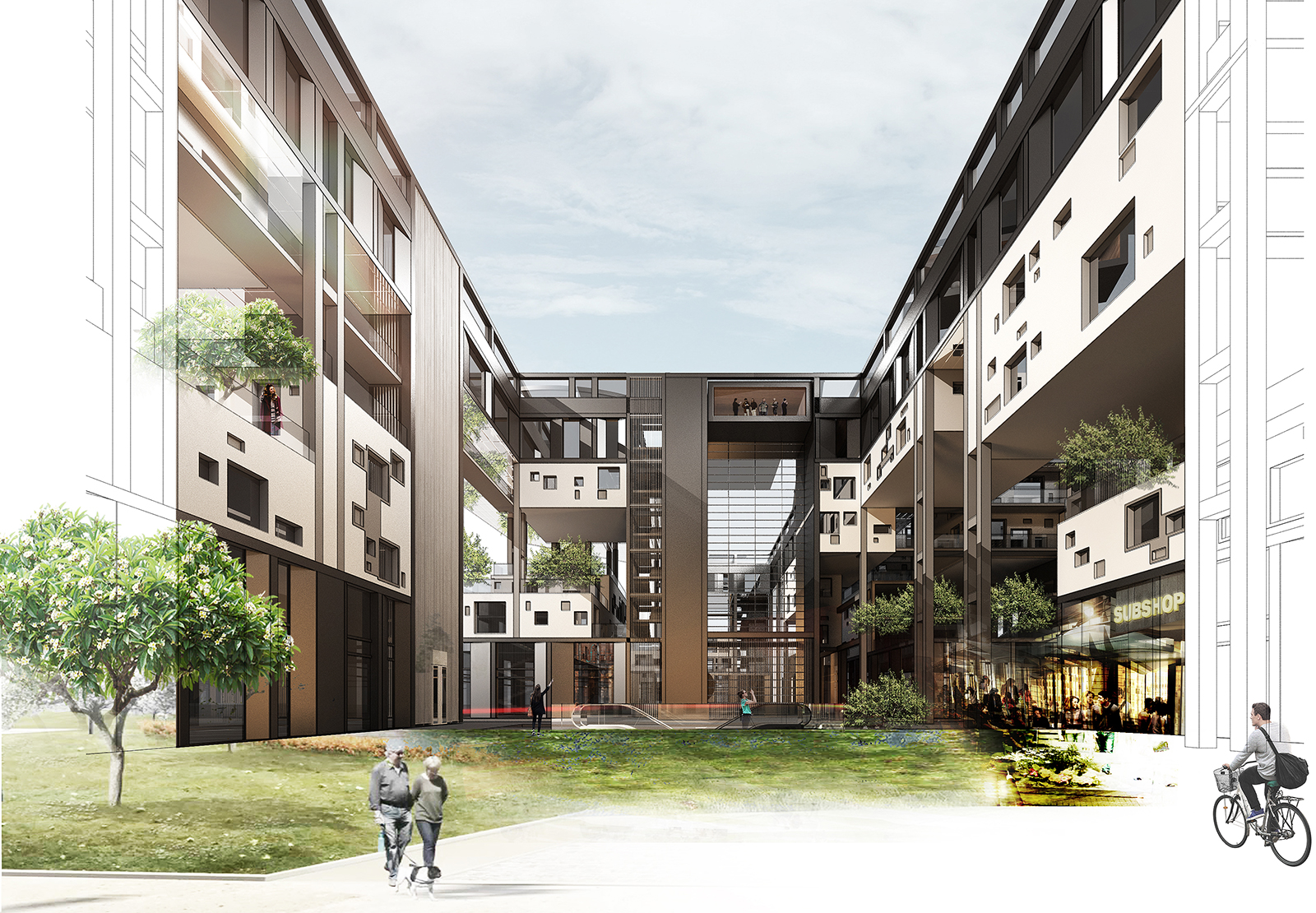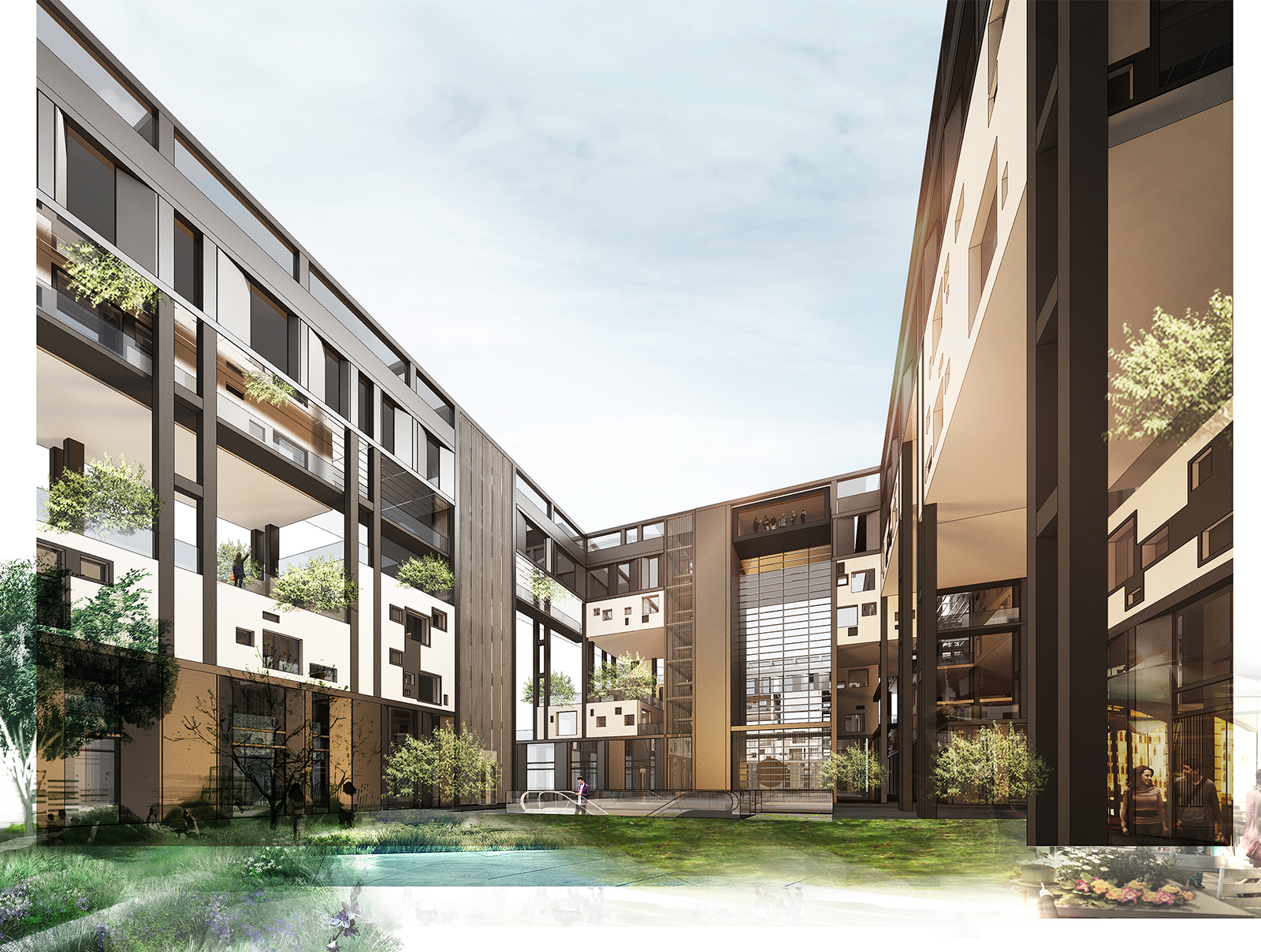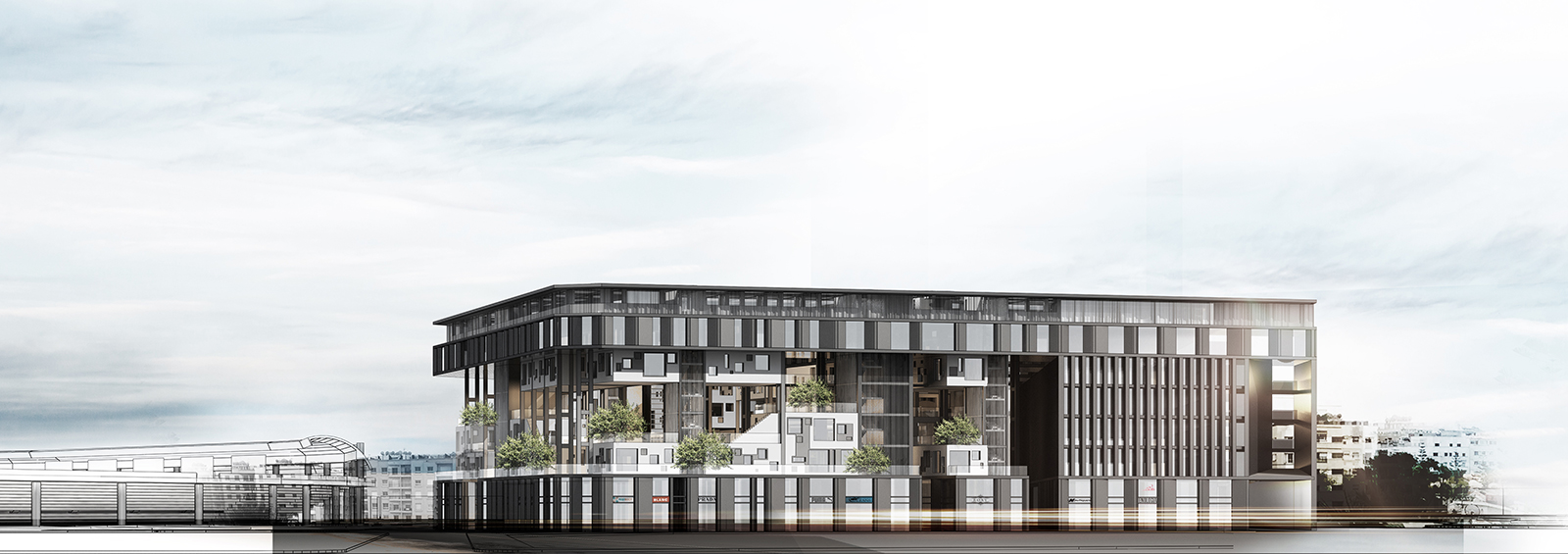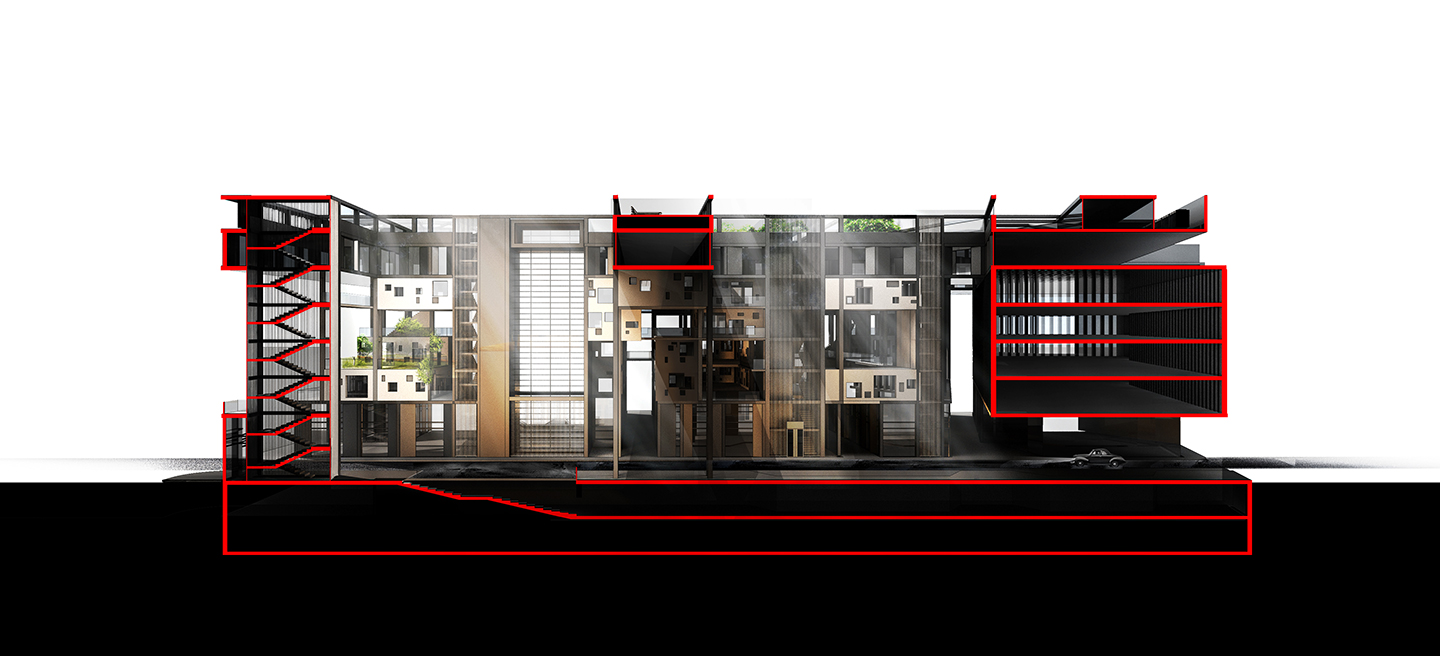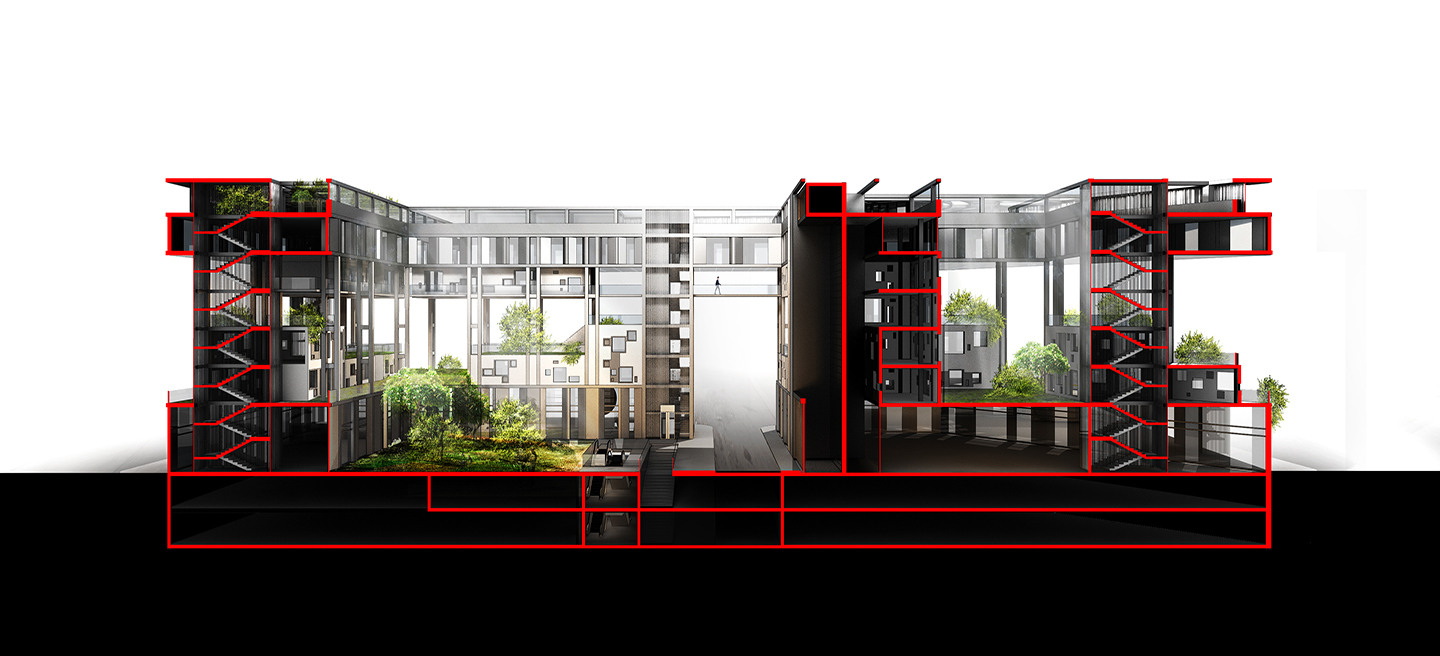
Mixed Use Development in Casablanca is located in Maarif, a Moroccan borough nestled in the heart of Casablanca. With a total built-up area of approximately 56,000 square meters, the program consists of a residential development, as well as an apartment hotel, various high-end retail outlets, offices and clinics.
The northern corner of the 8,440-square-meter plot is bordered by two major avenues, with 114 meters of frontage on the 30-meter-wide Socrate Avenue along the parcel’s northeastern orientation, and 110 meters along the 20-meter-wide Mamoun Mohamed Avenue at the northwestern limit. The southwestern edge borders an internal road, whereas the southeastern façade runs long the neighboring plot.
The traditional developer’s typology would consist of stacking 5 repetitive slabs upon a commercial base, leading to a heavy mass consisting of deep and typically poorly ventilated plates, lacking natural light at their center. Interior courtyards would be introverted and disconnected from the city, offering privileged conditions along the periphery versus less favored situations at the center.
Alternatively, our intervention considers the large scale of the development, and consequently fragments what could have been a monolith by weaving a web of arteries across the site. This encompasses a main vehicular boulevard and a network of pedestrian pathways interlacing two municipal interior courtyards, as well as a series of constructed voids. The project manifests itself as a radical urban intervention striving to create an exceptional instance in the urban fabric of Casablanca.
Firstly, the ground floor consists of a commercial base accommodating an assemblage of independent commercial pavilions fed by the web of vehicular and pedestrian arteries.
Substantial voids are carved out between the first and fifth levels, creating wells of light as well as a much more diluted residential program lodged between the denser ground and fifth level plates. Suspended villas are grafted to the structural vertical circulation cores between the first and third floors, substituting the typical developer’s deep-slabbed apartments for independent hovering residential pavilions with views on multiple orientations, accessible through their own courtyards or gardens within the open-air topography they occupy at improbable heights in an urban context.
The fifth level carries a denser plate of aparthotel units. A bridge on the fourth floor leads users up individual staircases to these apartments. From street level, its reflective underside offers a glimpse of the exceptional suspended garden experience, while simultaneously creating interesting visual connections between the residential pavilions above.
A new reference level was established at the sixth level, atop the relatively denser plate below. Gardens catering to the aparthotel units sit atop this level, accessed from the floor below by private staircases. An exceptionally long pool defines the public domain of the roof alongside terrace areas catering to food and beverage retail outlets.
The last component of the project situated along the southeastern orientation is the only element comprised of repetitive plates. The northeastern and southwestern tips house smaller-scale apartments, whereas the body of this building comprises offices and clinics spanning five levels.





